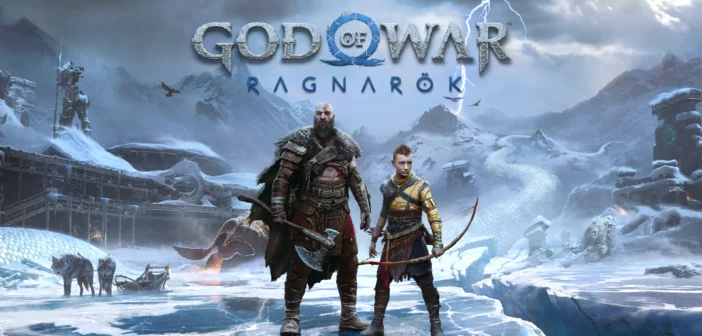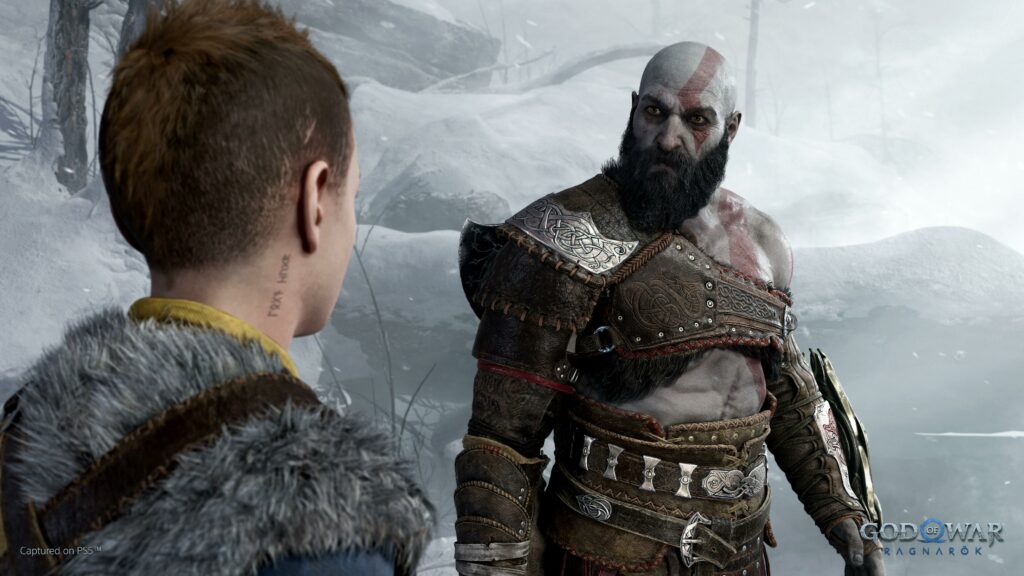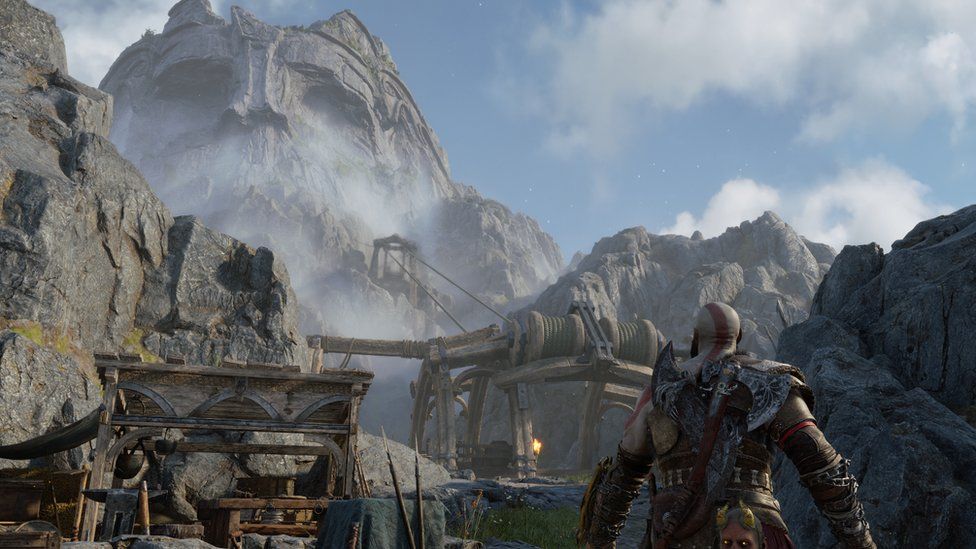God of War Ragnarok is everything that its 2018 predecessor was and more, but that doesn't mean it's one of gameing's greatest achievements like reviews will have you think.
*Reviewed on PlayStation 5*
God of War: Ragnarok is a behemoth of a game. Taking everything that made God Of War (2018) the monument it is remembered as, this sequel interns its predecessor’s strengths and weaknesses and decides to improve upon everything and anything. Combat is redefined and improved on, its story is more fleshed out and potent, its worlds are larger and more vibrant, and even its side content tells impressive stories with integral character development that makes it an experience to behold through and through. Yet, don’t be disillusioned, for all of God Of War: Ragnarok‘s successes, it also has one glaring issue that ultimately undermines the greatness it’s held up to be. I can assure you, this is no masterpiece or 10/10 game, but don’t let that detract from what it does achieve.
God Of War: Ragnarok picks up God Of War (2018)‘s story, three years after the death of Baldur. Fimbulwinter is in full force, the nine realms of Norse mythology changed in palpable ways while Kratos and Atreus are rushing towards a destiny they both seek to avoid. On a journey that first takes them in search of Norse mythology’s own god of war, Tyr, to later attempting to forestall the events of Ragnarok; the story spreads itself as a grand tale that acts as a tether to push and pull its characters in different ways. While God of War (2018) was very much the story of Kratos and Atreus, Ragnarok is the story of multiple characters, bringing in stronger emphasis on returning characters like Freya, Singri, and Brok; while making way for newcomers like Angrboda and everyone’s favourite god of thunder, Thor Odinson. However, in the process of this latest instalment, the themes that Ragnarok straddles change as well, moving from the focus on identity and obedience that characterised God Of War (2018), to telling a tale grounded in growth, grief, and the comprehension that actions have consequences. If there’s one thing that my time with God of War proved, is that Sony Santa Monica knows how to write some of video gaming’s greatest narratives, rivaling the artfulness of Naughty Dog and Focus Entertainment.
At the heart of Ragnarok are its stories and characters. Kratos and Atreus still find themselves struggling to fit within the father-son dynamic, and Mimir is often the passive observer who cuts the tension like a hot knife through butter. Freya’s grief rocks many of the moments that she happens to be on screen, and Atreus’ idealism or his sense of purpose dominates his actions and pursuit to make the world a better place. While the looming possibility of Ragnarok dominates the narrative, it’s rarely what the game is solely focusing on. The stakes of Ragnarok affect each character differently, and as such, Sony Santa Monica weaves a cautionary tale that has many characters finding how far they’ll submit to fate or destiny, and how much any of them are willing to lose. It may not have the emotional profoundness of recent releases like A Plague Tale: Requiem, and it certainly doesn’t have the oppressive bleakness of The Last of Us: Part II, but what story it does tell is masterful in of itself with a different focus and an entirely different path to take.
For all the greatness, it’s only disappointing then, that what is Ragnarok‘s greatest strength, is also its biggest weakness. To focus solely on the campaign of God of War, you’re expecting roughly 22 hours, which in the landscape of 100-hour RPG mammoths like Assassins Creed: Odyssey or Valhalla, isn’t all that long. The issue is how the game pads this campaign out. Through and through, Ragnarok is a combat-driven narrative game, it’s a shame then, that combat becomes the needless padding that Ragnarok never quite finds its step in. There’s a formula in Ragnarok and it goes a little like this:
- Arrive in a hub area of a map and be greeted with a beautifully acted motion-captured sequence that sets the scene and narrative.
- During the cutscene, realise you need to explore the sprawling world around you to get to your next destination.
- Travel to your next destination with plenty of combat-heavy action sequences and pepper infrequent dialogue exposition.
- Have a spectacular boss fight which ends in a gratuitous death sequence and another motion-capture cutscene to round the story beat.
It’s a formula that the original God of War trilogy utilised and many games before and after have, but it doesn’t quite work here because of the restless paddling the game’s story does around the combat sections of its formula. While Ragnarok has a much vaster array of enemy variety, you still end up fighting the same enemies over and over again, and it doesn’t help that it feels less fun and more like an excuse to extend the game as a whole. Ragnarok tries to justify this with character dialogue scenes that happen during exploration or movement between one area and another, but it often felt disjointed when two characters would clash in a previous cutscene, but then poke and pry into certain origins without any hint of the tension that fell before. There’s one storyline that’s particularly guilty of this, but to avoid spoilers, I won’t mention which. In general, the distance between cutscenes as a way to delve into exposition and character growth works well on paper but isn’t quite expertly pulled off in practice. It’s something that God of War (2018) was far more successful in doing because its focus on a tight-knit group of characters meant it had more time to explore them rather than occasionally shoe-horning everything else in the process.
Turning attention to combat, Ragnarok is everything you expect it to be. The Leviathan Axe and Chaos Blade feel as they did in 2018, but that’s no injustice because they felt great even then. Instead now, though, there’s a great focus on manoeuvrability that the Chaos Blades bring, allowing battles to happen in larger multi-level arenas in which Kratos can whip around and launch himself in different directions. What also comes about is new abilities to either permafrost the axe, or cause immolation with the blades, which effectively apply a hefty amount of status effects (frost and fire respectively) to enemies as well as powering up the first hit done with the weapon. Keyed with new abilities that you can button-map and skill trees that encourage combos, Ragnarok’s combat is practically faultless albeit a little repetitive. No matter your playstyle, Sony Santa Monica seems very aware that players will favour certain playstyles, offering the option to turn off certain abilities if you find yourself relying on them too much. The effect of this, though, only highlights that people end up favouring the same attack patterns on all enemies simply because they work. Very few enemies require you to think about how you’re attacking, and so by the end of Ragnarok‘s combat, it all felt a bit like button-mashing. The greatest sense of variation comes for the shield variety that all have a different playstyle in mind, but even then you’ll find yourself favouring one shield which boxes you into one play style.
Graphically and visually, Ragnarok is respectable, nothing to shun but nothing to gawk at. In fact, despite being a console generation apart, Ragnarok focuses on improving frame rates and smoothing player experiences rather than making any leaps in graphics. As a result, while Ragnarok plays more stable than God of War (2018), graphically it’s on par. It certainly doesn’t have as much of a visual identity that Ghost of Tsushima had, and it certainly isn’t graphically as detailed or as stunning as this year’s earlier release of Horizon: Forbidden West. That’s not to say Ragnarok is disappointing in those respects, but it certainly isn’t ground-breaking either. Instead, Ragnarok chooses to amaze with its stunning renditions of different worlds, whether it be the luscious lakes and rocky mountains of Svartalfheim or the luscious greenery and swamp lands of Vanaheim. Each land brings its own dangers, promising unique creature designs and separate puzzles, and each world feels different to play within and experience (even if Asgard was vastly disappointing). You end up losing so much time on each map because they promise new secrets, stories, and side-content which oftentimes rivaled the narrative of the main story.
There’s a lot of praise to heap upon God of War: Ragnarok, but it’s not the masterpiece critics would have you think. It thrives on a certain level of expectation and hype that meant it was unlikely to ever be met with anything other than praise. However, Ragnarok is not the game to change all games, and it certainly isn’t one I will replay anytime soon. What it does is admirable, telling one of games’ greatest stories, which becomes lost in padding. A shorter playtime and a tighter focus could have helped Ragnarok, but no matter its faults, it’s a game that should still be on everyone’s list to play at some point.







